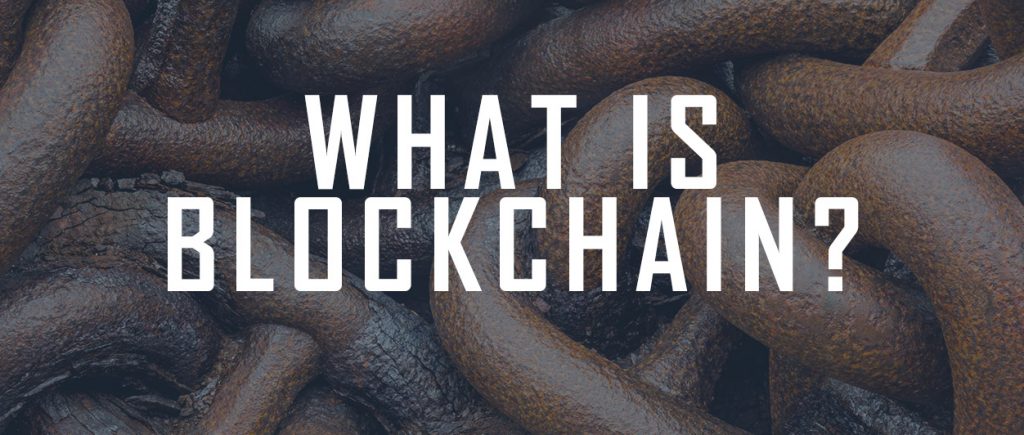What is blockchain? Simply put: think of the blockchain as a public ledger in which all participants write down every modification/transaction made and validate eachother. If person A transfers 1 Bitcoin to person B, the ledger will read “person A -1 Bitcoin, person B +1 Bitcoin.” This information is stored in a so called ‘block’, which you can think of like a chapter in a book filled with many of these transactions. These chapters are chained together (linearly) in a chronological order, and all these transactions can be witnessed by everybody. This doesn’t mean the blockchain ‘knows’ how much money you have on an account, because that information simply isn’t stored on the blockchain. But the calculations can be made to figure out how many coins of a certain currency there should be on an account, seeing as all the transactions are public. Of course people have created software and websites for this exact purpose.
To summarize in a very simplified manner: a blockchain is a series of transactions.

How does blockchain technology work?
When two people agree to engage in a transaction, this is confirmed by each of them and then publicly added to a block. This way no one can cheat the system, since all participating machines confirm what transactions take place and they each receive a copy of this information. No one can digitally add cryptocurrencies to their account because this information is simply not accepted by the other participants. Only transactions performed through protocol are accepted and then added to the blockchain.
What purpose does the blockchain serve?
There are three very distinguishing factors to blockchain technology: decentralization, transparency, and safety. Since the blockchain is a public ledger, there isn’t a single owner or controlling party. There’s no bank through which all the information has to pass, there are no CEO’s making decisions about the assets of others, and there’s no possibility to modify the information on the blockchain – other than making a legitimate transaction.
Can a cryptocurrency or blockchain be hacked?
Cryptocurrencies have been hacked, but this is done through the software layer on top of the blockchain. A well known example is the hack of an exchange called Mt. Gox. A hacker got access to the virtual safe (the ‘wallet’) of Mt. Gox and they continually sent its contents to a private address. The administrators of Mt. Gox actually noticed this virtual emptying of the vault, but they assumed that it was procedure and that it was being stored at a safe location. When Mt. Gox started lagging in paying their users, it became clear something was wrong. Eventually the exchange announced it had been hacked. Throughout the two month period up until the announcement of the hack, the Bitcoin fell 36 per cent.
While cryptocurrency related software and websites have been hacked, this has never happened to a blockchain. Every participating machine automatically checks and confirms all transactions made, so if one were to hack a blockchain and try to change values, it would be like convincing the world that 1+1 equals 3; there are too many people who possess the actual information for a blatant falsehood to pass.
Practical applications of a blockchain
Since everybody publicly writes in the ledger and there is no single controlling party, blockchain technology can be applied in several interesting ways. The most obvious example is directly transferring money (cryptocurrency) to an unknown entity, without a middle man. But other types of information can be run through a blockchain, creating all kinds of possibilities.
- You can create an online entity that’s acknowledged by everyone participating in the blockchain (backed by a passport for example). This identification can be used for placing an online autograph, or to login on websites.
- Adding a condition to a transaction, for example a good cause. You transfer cryptocurrency to an address that can only be used to purchase food or electricity.
- An insurance that automatically pays the user when the conditions are met. For example a cancellation insurance in case it snows. The blockchain checks a weather report, all participating machines confirm there has been a blizzard, and the insurance pays automatically.
- VAT (sales tax) can be fully automated. With each transaction the VAT is automatically transferred to a confirmed address. This way a lot of administration can be spared.
- A soda machine that’s running out can send a message to a delivery service to refill the machine. When the machine is stocked up again, the payment is automatically transferred.
What can I do with blockchain technology?
If you can develop software, you can create many applications (like the one described above). Many of us can use it as a direct and safe manner of communication with strangers, through transactions or other information modifications. A lot of the cryptocurrency news is about the fluctuations of value, mostly concerning the Bitcoin. This is due to the high interest in trading with cryptocurrencies, which is the most direct way for an individual to make a profit, and there are several ways of doing this.